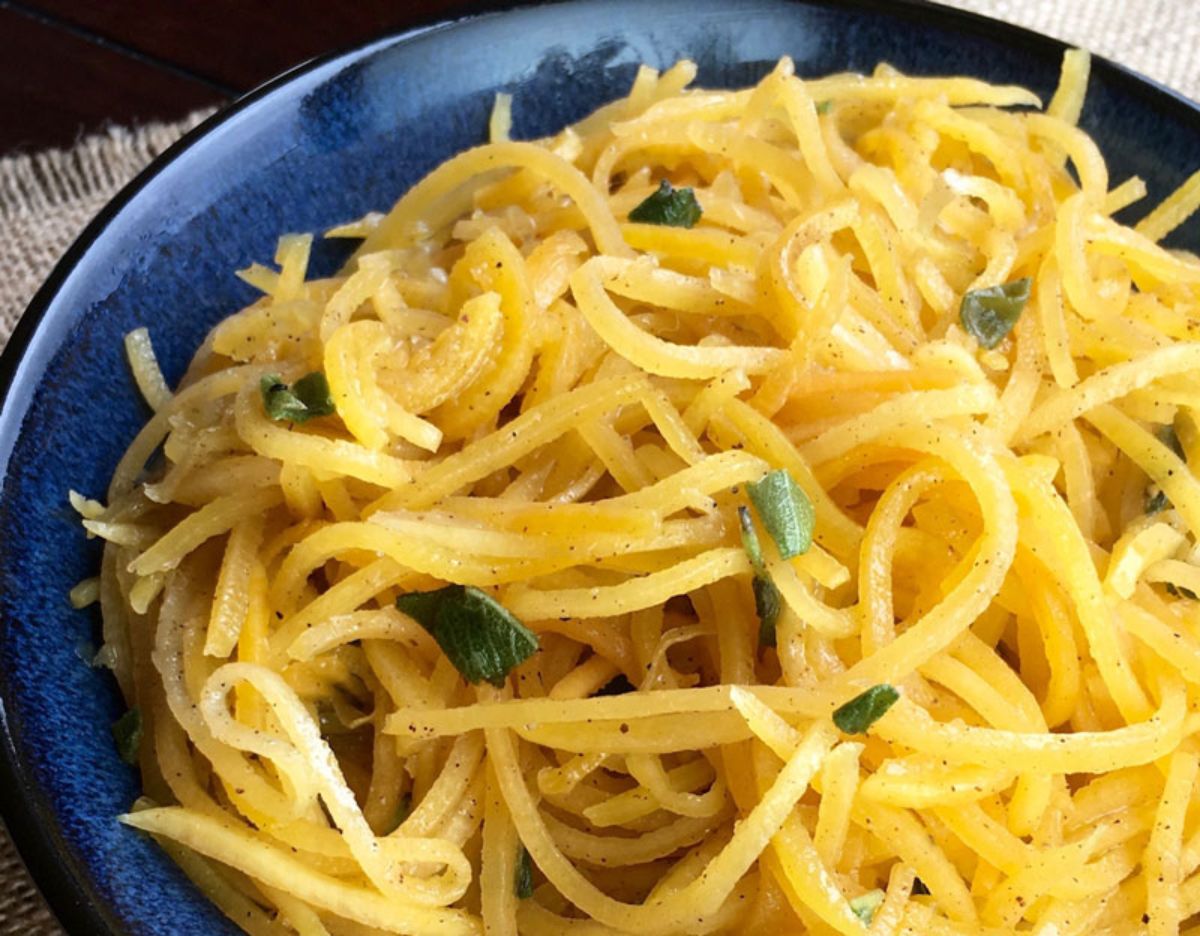Tired of the same old pasta dishes but committed to a low-carb lifestyle? Imagine vibrant, flavorful dinners that satisfy your cravings without derailing your health goals. This guide unveils a world of delicious low-carb pasta alternatives, from the delicate spiral of zucchini noodles to the surprisingly satisfying chew of shirataki. We’ll explore diverse culinary options, simple cooking techniques, and mouthwatering recipes, transforming your dinner routine into a culinary adventure.
Prepare to discover the secrets to achieving perfect texture, preventing soggy noodles, and creating sauces that complement each unique pasta substitute. Whether you’re a seasoned low-carb enthusiast or just starting your journey, this comprehensive guide will equip you with the knowledge and inspiration to craft stunning low-carb pasta meals that delight your taste buds and nourish your body.
Popular Low-Carb Pasta Alternatives

Embracing a low-carb lifestyle doesn’t mean sacrificing the joy of pasta night. A variety of delicious and nutritious alternatives exist, offering similar textures and satisfying meals without the carb overload. These options provide a welcome change of pace while helping to manage carbohydrate intake.
Nutritional Profiles of Low-Carb Pasta Alternatives
Choosing the right low-carb pasta alternative depends on individual dietary needs and preferences. The following table compares the nutritional content of some popular options per 100g serving, showcasing variations in carbohydrate, protein, and fiber levels. Note that these values can vary slightly depending on the brand and specific ingredients.
| Pasta Alternative | Carbohydrates (g) | Protein (g) | Fiber (g) |
|---|---|---|---|
| Shirataki Noodles | < 1 | 0-3 | < 1 |
| Lentil Pasta | 20-30 | 20-25 | 5-10 |
| Chickpea Pasta | 25-35 | 10-15 | 5-8 |
| Kelp Noodles | < 1 | < 1 | < 1 |
| Zucchini Noodles (Zoodles) | 5-7 | 1-2 | 1-2 |
Low-Carb Pasta Recipes: A Culinary Exploration
The versatility of low-carb pasta alternatives shines through in diverse culinary applications. Here are three recipes showcasing their adaptability.
Recipe 1: Creamy Pesto Shirataki Noodles with Cherry Tomatoes
Imagine delicate, almost translucent shirataki noodles tossed in a vibrant pesto sauce, the bright green color contrasting beautifully with the juicy red cherry tomatoes. The sauce, a rich blend of basil, pine nuts, Parmesan cheese, and garlic, clings to the noodles, creating a light yet satisfying dish. A sprinkle of fresh Parmesan adds a final touch of elegance.
Recipe 2: Lentil Pasta with Mediterranean Vegetables and Feta
Picture hearty lentil pasta, boasting a subtly earthy flavor, coated in a fragrant sauce of sun-dried tomatoes, Kalamata olives, artichoke hearts, and crumbled feta cheese. The vibrant colors of the Mediterranean vegetables pop against the deep brown of the pasta. A drizzle of olive oil adds richness and ties the flavors together, creating a satisfying and nutritious meal.
Recipe 3: Spicy Chickpea Pasta with Shrimp and Coconut Milk
Envision vibrant orange chickpea pasta, its slightly nutty flavor enhanced by a creamy coconut milk sauce infused with red pepper flakes for a subtle kick. Plump, juicy shrimp are scattered throughout, adding a delightful protein boost. The combination of the pasta’s texture, the creamy sauce, and the shrimp creates a flavorful and texturally diverse dish with a hint of tropical flair.
Textural Comparison: Traditional Pasta vs. Low-Carb Alternatives
The texture of low-carb pasta alternatives varies significantly from traditional pasta. Traditional pasta offers a smooth, chewy texture, while low-carb options can range from the almost gelatinous feel of shirataki noodles to the firmer bite of lentil or chickpea pasta. Zoodles, for example, possess a softer, more delicate texture, similar to vegetables. Understanding these textural differences helps in selecting the appropriate alternative for a given recipe. Some alternatives, like shirataki noodles, require careful preparation to avoid a slimy texture. Others, like lentil pasta, offer a more familiar, hearty bite, closely mimicking traditional pasta.
Dietary Considerations and Benefits
Embracing low-carb pasta alternatives offers a compelling approach to managing carbohydrate intake and potentially reaping various health benefits. By swapping traditional pasta for lower-carb options, individuals can influence blood sugar levels, potentially improve metabolic health, and explore diverse culinary possibilities within dietary restrictions. Understanding the nutritional profile and suitability of each alternative is key to maximizing its impact.
The potential health benefits of incorporating low-carb pasta alternatives into a balanced diet are multifaceted. Lowering carbohydrate consumption can lead to improved blood sugar control, which is particularly beneficial for individuals with diabetes or prediabetes. Many low-carb options are also higher in fiber than traditional pasta, promoting digestive health and satiety. This increased feeling of fullness can contribute to weight management by reducing overall calorie intake. Furthermore, some alternatives offer a boost in protein and micronutrients, enhancing the nutritional value of meals. For instance, shirataki noodles, while low in calories and carbs, are a good source of glucomannan, a type of soluble fiber.
Suitability for Various Dietary Restrictions
Low-carb pasta alternatives cater to a wide range of dietary needs. Many options are naturally gluten-free, making them suitable for individuals with celiac disease or gluten sensitivity. Examples include shirataki noodles (made from konjac yam), kelp noodles (made from seaweed), and zucchini noodles (zoodles). However, always check product labels to ensure gluten-free certification, as some processed low-carb pastas may contain gluten-containing ingredients. For vegans, several options exist, such as lentil pasta, chickpea pasta, and shirataki noodles (ensure no animal-derived ingredients are added during processing). Choosing vegan options requires careful label reading to confirm the absence of animal products or by-products.
Portion Sizes and Serving Suggestions
The appropriate portion size for low-carb pasta alternatives varies depending on the specific product and individual dietary needs. Generally, a serving size mirrors that of traditional pasta, typically around 1-1.5 cups of cooked pasta. However, due to the often lower calorie density of low-carb alternatives, one might feel satisfied with a slightly smaller portion. Shirataki noodles, for instance, have a very low caloric density, and a larger serving may be necessary to achieve a feeling of fullness. Zucchini noodles, being more substantial than shirataki, might require a smaller portion to satisfy hunger.
Serving suggestions are diverse and adaptable to individual preferences. Low-carb pasta can be incorporated into a variety of dishes, including pasta salads, stir-fries, and traditional pasta sauces. Experimenting with different sauces and toppings can enhance the taste and overall experience. For instance, a vibrant pesto sauce pairs well with zucchini noodles, while a creamy tomato sauce complements lentil pasta. Remember to consider the overall caloric and macronutrient content of the entire dish, including the sauce and toppings, to maintain a balanced meal. For example, a serving of lentil pasta with a light tomato sauce and lean protein is a nutritious and satisfying option. A serving of shirataki noodles with a flavorful, low-sodium stir-fry can be a healthy and filling meal.
Embracing low-carb pasta alternatives doesn’t mean sacrificing flavor or variety. With a little creativity and the right techniques, you can enjoy satisfying and healthy meals that rival traditional pasta dishes. From the satisfying “bite” of lentil pasta to the subtle sweetness of zucchini noodles, the journey of low-carb pasta is filled with exciting discoveries. This guide has provided you with the tools and inspiration to create delicious and healthy meals, proving that a low-carb lifestyle can be both enjoyable and fulfilling. So, embrace the possibilities and start crafting your own low-carb pasta masterpieces!
FAQ Insights
Can I reheat low-carb pasta?
Yes, but some alternatives reheat better than others. Zucchini noodles can become mushy, while lentil pasta holds its shape well. Gently reheat in a pan with a little sauce to prevent drying out.
Are all low-carb pasta options gluten-free?
Most are, but always check the label. Lentil pasta, for instance, is naturally gluten-free, while some brands of shirataki noodles may contain gluten.
How do I store leftover low-carb pasta?
Store cooked low-carb pasta in an airtight container in the refrigerator for up to 3-4 days. Zucchini noodles are best consumed fresh, while others can hold up well for a few days.
What’s the best way to prevent zucchini noodles from getting soggy?
Pat them dry thoroughly after spiralizing, and sauté them briefly in a hot pan before adding sauce to reduce excess moisture.


